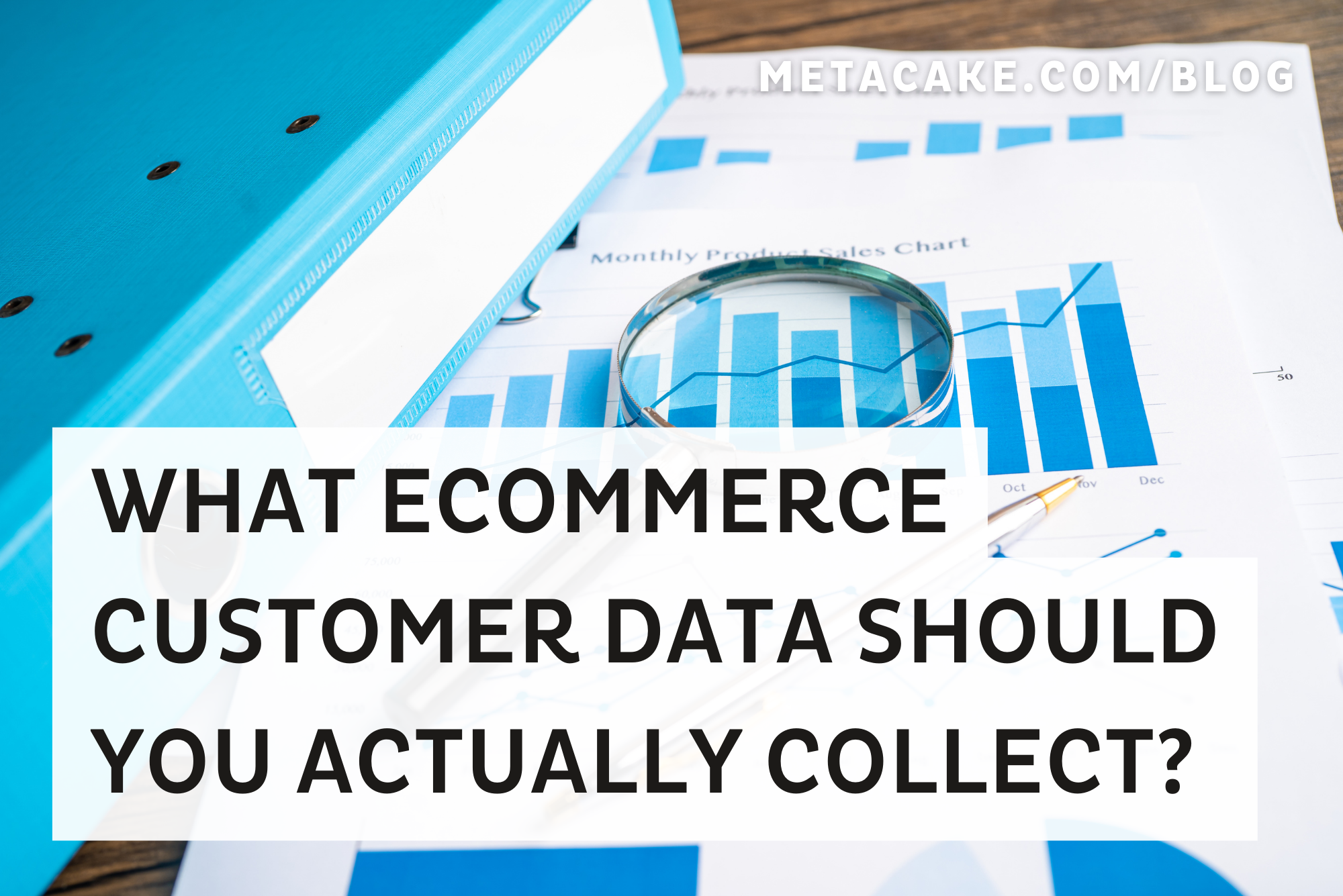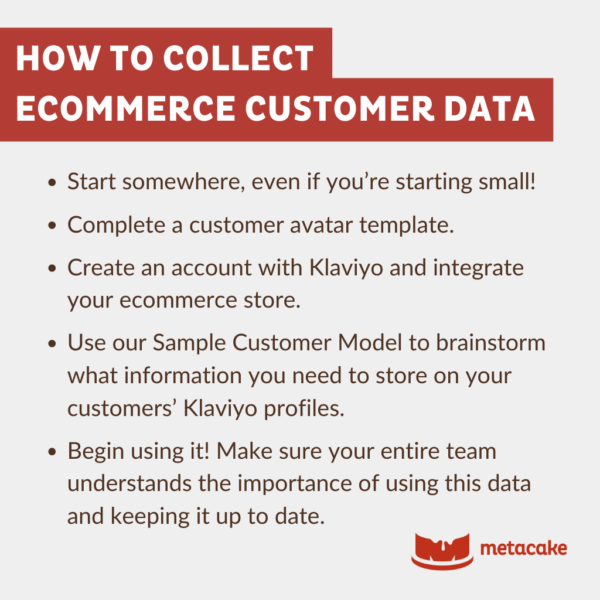
WHAT ECOMMERCE CUSTOMER DATA SHOULD YOU ACTUALLY COLLECT?
We’ve discussed the importance of owning your ecommerce customer data and storing all that information in one place. But even if you do this already or are in the process of making the transition, you probably have a few questions — namely, “What customer data should I collect?” and, “What should I use that data for?”
Owning and understanding your customer data allows you to build a relationship with your buyers without relying on third-party tools. Below, we’ll dive deeper into this concept and share a simple, useful way to model ecommerce customer data within your own system.
Collecting Ecommerce Customer Data? Remember These 5 Tips
Before you start collecting your ecommerce customer data, remember these best practices:
1. Keep it simple (and grow as needed).
The more complicated your process is, the less effectively you’ll be able to execute it. Collecting too much customer data will only slow you down and make it difficult to put the data into action.
2. Let customer actions inform what data you collect.
Don’t just collect a random assortment of data — it’s what has led to privacy issues in marketing today.
Instead, collect only the information that will help you sell your product effectively, communicate with your customers personally, build relationships to serve those customers, and add value to their experience.
The type of information you need depends on what you sell and who your customers are. Consider this question: If all third parties were removed (e.g., if Facebook couldn’t help you target customers based on interests or actions taken on the site), what information would help you sell to your customers effectively?
3. Use a platform to store and organize your data.
Managing a spreadsheet of ecommerce customer data is too time-consuming for most brands.
Instead, use a CRM-like platform that allows you to own the data, integrates with ecommerce marketing software, allows you to build out a customer model, and can be exported as a backup. (We’ll share our specific recommendation further down.)
4. Collect binary information.
Collect your ecommerce customer data in a way that allows you to act on it easily and at scale.
Collecting paragraphs of text isn’t helpful when you want that information to help you trigger an automated email. So, structure the data you collect actionably, such as yes/no for certain actions, sets of values, etc.
5. Use your customer avatar.
Before you do anything else, make sure your customer avatars are dialed in.
Who is your target customer, really? This goes beyond demographic information and looks at their lifestyle, interests, goals, habits, personality, and more. Answering this question will support all areas of your business, including data collection.
Need help? Check out our customer avatar template.
How to Collect Ecommerce Customer Data
Collecting ecommerce customer data can be overwhelming at first. But you have to start somewhere, even with a very simple data set. Then, tailor that data to your business’s needs.
To get you thinking about what to include, we’ll provide a sample customer model below.
As we mentioned, don’t focus so closely on what to collect — focus on what you want to do. How do you want to serve your customers and communicate with them? Your answer will inform what data you track and collect. For example:
- If you want to send customers product recommendations to encourage them to come back for seconds, track which products they bought.
- If you want to send thank-you emails to VIP customers, track and segment customer spending.
Sample Customer Model
Our sample customer model should give you an idea of what kind of ecommerce customer data to gather:
Basic Contact Information
Name, email, phone number, address.
Basic Contact Preferences
How do they prefer to communicate?
Relevant Demographic Information
Location, lifestyle, cultural context, marital status, whether they have kids, stage of life, age, income bracket, etc. Which information you collect will be unique to your business’s needs. Collect what you need and leave what you don’t.
Interests
What are your customers interested in? What pain points do they have that your products solve? Think of activities, hobbies, or even other brands they might be loyal to.
Customer History
This data will help you understand how engaged customers are with your brand and where they are on the customer journey. For instance, you might choose to track past purchases, email interactions (opens and clicks), video watches, website activity (page views, add-to-cart events, etc.), or customer service inquiries.
Use This Tool to Collect Ecommerce Customer Data
Klaviyo is a powerful email marketing platform for ecommerce businesses, and it also functions as a great CRM.
Within Klaviyo, every customer has a profile that can contain actions they took on your ecommerce store, interactions with every email they receive, and any number of custom properties you can upload via CSV file.

How to Collect Ecommerce Customer Data: Recap
To recap, here’s how to identify what ecommerce customer data you want to gather and start collecting it:
- Start somewhere, even if you’re starting small!
- Complete a customer avatar template.
- Create an account with Klaviyo and integrate your ecommerce store.
- Use our Sample Customer Model (above) to brainstorm what information you need to store on your customers’ Klaviyo profiles.
- Begin using it! Make sure your entire team understands the importance of using this data and keeping it up to date.
Need help getting started? Reach out. We’re happy to get your ecommerce customer data collection off the ground.



